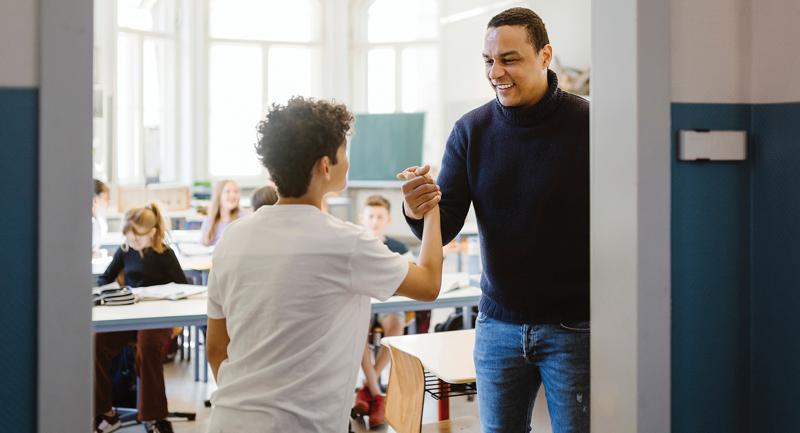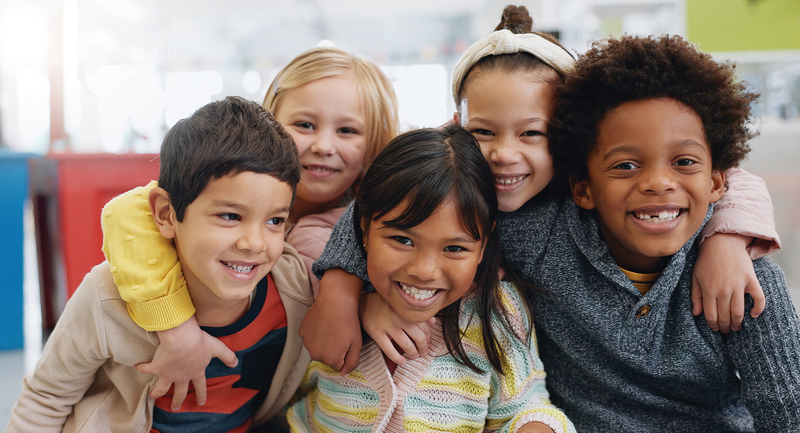"Empathy is arguably the pinnacle of our social cognitive achievements—the peak of the social brain," writes Matthew Lieberman in Social: Why Our Brains Are Wired to Connect (2013, p. 60). "It requires us to understand the inner emotional worlds of other people and then act in ways that benefit other people and our relationships with them. It can motivate us to alleviate another's pain or to celebrate someone else's good fortune."
Healthy, authentic social connections are built on empathy. Without the ability to empathize, we cannot be our best selves. Therefore, it is our obligation as educators to teach lessons of empathy. We can do this by using meaningful, educative talk as a central learning tool in literacy, social studies, and behavior management.
Studying Character
In New York City, where I serve as an assistant principal, one way many schools use educative talk to help students practice and develop empathetic behaviors is a "Book of the Month" initiative. Each teacher receives a copy of a story that lends itself to poignant discussion about a character's thoughts, words, and actions. Reading these books aloud to our students, we discuss how the character might feel, why he or she makes certain choices, and what we might do differently in the same situation. We ask our students to mentally put themselves in the characters' shoes to understand their motivations better. These books become mentor texts that we refer to during writing assignments and schoolwide character building.
Building Background Knowledge
In Engaging Students in Disciplinary Literacy, K–6: Reading, Writing, and Teaching Tools for the Classroom, the authors describe historical empathy as "the ability to empathize with a group or person from history and their experiences, while understanding the historical, political, sociocultural, and economic context in which they lived" (2014, p. 87). The authors suggest that teachers can provide a foundation for guiding students' learning about historical empathy by first teaching cultural universals (such as the need for food, clothing, and shelter) of a society before encouraging them to imagine how a group or person might feel when one of those universal needs was affected. For example, one teacher referenced in this book asks students to consider "how Sacagawea might have felt to see the destruction of the buffalo" (2014, p. 87). It is important to note that the teacher asked her students how Sacagawea might have felt, rather than how they might have felt. By learning background and context for historical figures like Sacagawea, students can develop empathetic understanding and responses based on knowledge and not just their own experiences and opinions.
Empathy practiced in academic discussion or inquiry is not bound to the classroom. Trying on another's perspective in literary or historical analysis can help students apply empathy in their personal experiences as well.
Modeling Empathy in Conflict
As an assistant principal, I often lend a hand in conflict resolution situations. Many times, I encourage empathetic thought processes by asking students, "Would you like it if someone did that to you?" or "How do you think that made ___ feel?" or "What could you have done differently?" Other times, when dealing with a particularly explosive or angry child, I model empathy by lending an ear, mirroring some facial expressions, and maintaining eye contact until the student has calmed down and is ready to talk. While listening to the angry child, I listen for nuggets of information that will help me gain insight as to what is really going on with the student. I affirm the child's feelings and ask guiding questions to steer the child toward making better behavioral choices and repairing relationships.
Cultivating students' ability to use empathy to better understand literature, groups, or individuals separated from them by culture or time period—and even their own peers—helps them answer the brain's most burning question: why? Empathy fosters the social connections most of us crave by allowing us to take on others' perspectives and feel their pain or triumph. Practicing empathy in our schools motivates students to be more engaged with content and one another.







